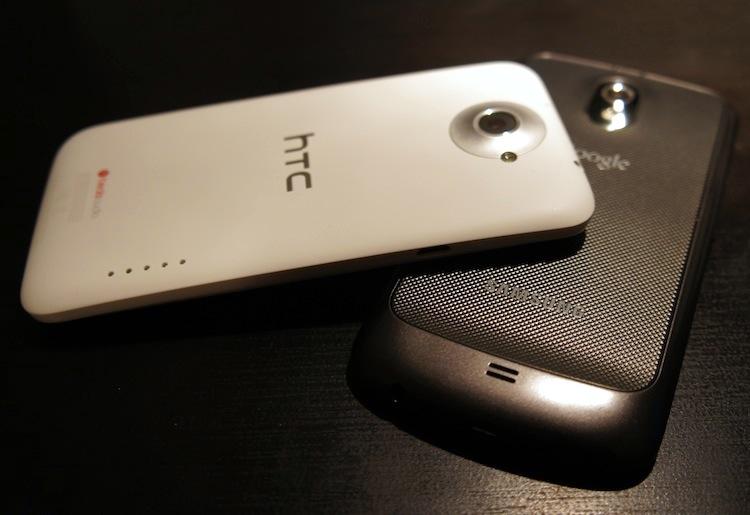
It's not hard to argue that Android is currently the driving force in mobile, both in hardware and software. More so than its counterparts, Android has always moved at breakneck pace. Android was the first mobile platform to utilize multi-core processor architectures, the first to adopt 4G LTE connectivity as well as many other firsts. Not to mention, its interface has radically changed (and improved) over the years, whereas its competitors, for the most part, look exactly the same.
Now that Jelly Bean is officially available for Android users, specifically for Nexus 7 and unlocked HSPA+ Galaxy Nexus owners, there is also at least one more first under Android's belt, such as Google Now, the artificially intelligent assistant service that learns you, your habits and offers suggestions and other helpful things (i.e.: directions, currency converters, translators, etc.) based on your Google searches, location and time. Aside from Google Now, there are also several other refinements that make Android 4.1 a vast improvement over the previous version.
Alongside (yet completely unrelated to) Jelly Bean, several flagship devices have also launched recently or will launch in the very near future. First, there's the HTC One X, which comes with LTE connectivity and a 1.5GHz dual-core Snapdragon S4 or a global version that has HSPA+ connectivity and a NVIDIA Tegra 3 quad-core processor. And there's Samsung's monster phone which either comes with LTE and the same 1.5GHz dual-core Snapdragon S4 or a quad-core Exynos chip and HSPA+ connectivity. Both have 720p displays (albeit of different technologies and negligibly different sizes), ample memory, storage and relatively high build quality. (Design is subjective and I seem to be part of the minority that doesn't like the look of the Galaxy S III at all.)
With ease, these are the best Android-powered handsets currently on the market. There's a definitive line between this year's best flagships and the best devices of, say, six months ago. Android manufacturers are finally putting some fine polish on their devices and it definitely shows.
There's a problem, however. As many in the industry have pointed out over the last few weeks and days – and as Evan and I both touched on recently – there are still some side-effects of Android's fragmentation. (Never mind that the issue is blown out of proportion.) Brand new devices are months from getting Jelly Bean, and the few that are just a few months from release are not likely to ship with Android 4.1 either. (The Android PDK is definitely promising. But I wouldn't expect to see a major shift until the next version of Android.)
As many of you probably know by now, I have been switching back and forth between the Galaxy Nexus with Jelly Bean and the HTC One X with Sense 4 atop Ice Cream Sandwich.
For two months, I carried the HTC One X with next to no issues. (Battery life was initially a problem, but has since been solved after receiving a replacement device.) It is easily one of my all-time favorite phones, and I have ranked it as the #1 smartphone in our Official Smartphone Rankings™ for many weeks now. But Jelly Bean is a notable upgrade to Ice Cream Sandwich, and it's packed with many features that I find very useful and catch myself using more than I actually thought I would. After a few days of using it on the Nexus 7, I loaded it on the Galaxy Nexus and never looked back.
Now I'm at a crossroad.
I'm not very fond of the display on the Galaxy Nexus, nor am I a fan of the design or build of the phone. It's built of a very cheap feeling plastic and utilizes Samsung's HD Super AMOLED display technology with a PenTile Matrix subpixel layout. (Read here for a more in-depth explanation of why I think that's a bad thing.) That said, the software is irreplaceable.
On the One X, Sense 4 is bearable – which is a far cry from previous versions of Sense UI – but, without question, I prefer stock Android. However, the build quality of the HTC One X is spectacular, as is the display. (Spoiler: it's my favorite mobile display, even over the new iPad's Retina Display.)
So what's a guy to do? I could tirelessly keep switching between devices. But that's already getting old after just a couple days. And, I'm sure some of you are yelling at your computer (or smartphone) screen saying, "Just root the One X and put stock Android 4.1 on it once it's available!" But where's the fun in that?
Incessantly switching between devices is tiring and usually annoying. And there are no Jelly Bean ROMs for the AT&T One X yet. Either way, I will eventually decide on one or the other and give my SIM card a rest. In the meantime, I want to pick your brains. Which is more important? Hardware? Or software? If you had to choose (note the bold words) between an inferior phone with better software or much better hardware with outdated, mucked-up software, which would you choose?
Already, I'm leaning towards the Galaxy Nexus. I find myself constantly swiping up from the home button to pay Google Now a visit. And the new notification shade is lovely. But the hardware is killing me, and when I see the One X gathering dust on my nightstand, I immediately pull out the micro SIM from its adapter and throw it in the HTC device. I will admit, I could easily live with Ice Cream Sandwich and Sense 4 on the One X. But already having tasted Jelly Bean, it's hard going backwards.
So tell me, readers. Which is it for you? Hardware or software?
Oh, and don't cop-out and say, "I have the best of both worlds. I rooted and put Jelly Bean on my [insert device name here]." This is hypothetical … a "what if" situation.